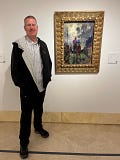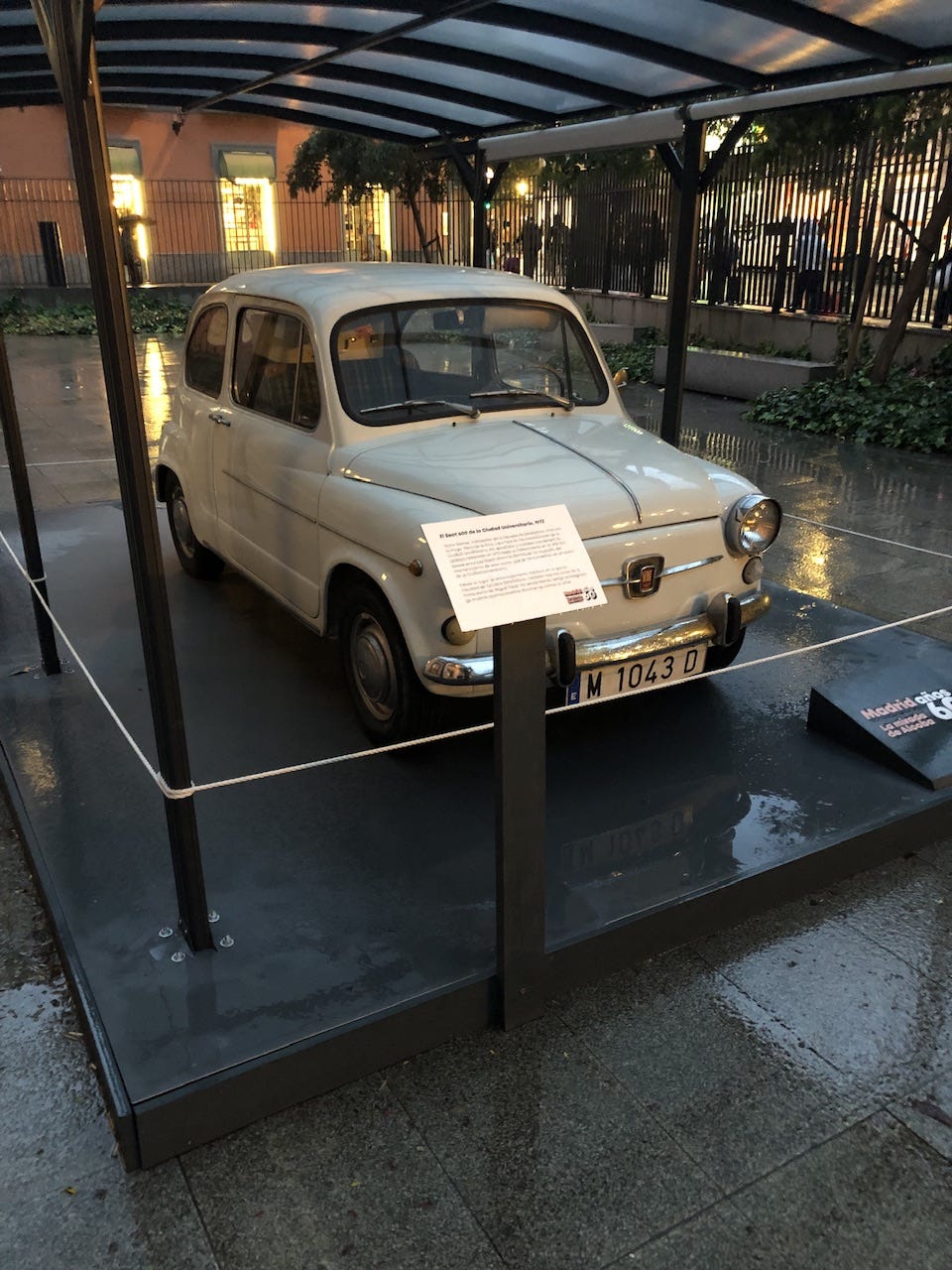Madrid 29-Oct-24
Jim with “The Jockeys” by Henri Toulouse-Lautrec (1864 - 1901), painted in 1882 in the personal collection of Carmen Thyssen-Bornemisza in the eponymous museum.
On this day 29 October 1863 – countries met in Geneva and agreed to form the International Red Cross. The countries were:
Grand Duchy of Baden
Kingdom of Bavaria
Second French Empire
United Kingdom of Great Britain and Ireland
Kingdom of Hanover
Grand Duchy of Hesse
Kingdom of Italy
Kingdom of the Netherlands
Austrian Empire
Kingdom of Prussia
Russian Empire
Kingdom of Saxony
United Kingdoms of Sweden and Norway
Spanish Empire
Switzerland – honored with the symbol and name from its own flag; the colors were merely reversed.
After a few hours of preparation for our return home on Thursday, Beth and I headed out to visit more museums in Madrid. We first went to the Thyssen-Bornemisza Museum, northwest of the Plaza de Neptune. It is very near the Prado Museum. The Thyssen contains the private collection of the eponymous family, spanning centuries of European and American art. We set ourselves a challenge to find favorite pieces and then share why we liked them over lunch. Returning to the gallego restaurant, Terramundi, was good motivation for me.
Here is a surprising favorite of mine:
Willem de Kooning (1904 - 1997), Red Man with Mustache, 1971.
The splashes of color drew me in. When I took the photograph, all of a sudden, I could see the man.
Beth liked this piece because of the expressions that the artist captured.
Marines van Reymersearle (ca. 1490 - 1567), The Calling of Matthew, ca. 1530.
The biblical account told in the setting of medieval Holland drew Beth’s interest.
There was way more to see. The Thyssen has a current exhibit of Peter Halley (born 1953), curated by the artist himself of all his paintings in Spain. The four exhibit rooms popped with his day-glo paints and geometric lines.
The Museum also had an excellent exhibit about the frames that are often a forgotten field. Here’s the link to their on-line portion:
https://www.museothyssen.org/en/exhibitions/pictures-frames/room-texts?&utm_source=cartelas&utm_medium=qr&utm_campaign=marcos-coleccion&utm_group=museo
Framing is also an important issue for writers. The beginning and ending of a historical essay set the history in the place wanted by the researcher.
After our lunch discussion, we then visited the Madrid History Museum. Even the building itself is a history of the city - the Royal Hospice of San Fernando on Fuencarral Street has been a part of Madrid’s modern history since it’s construction in 1726 under the direction of Pedro de Ribera. The baroque doorway is pretty impressive but I enjoyed seeing the 1972 Seat 600 on display.
Many thousands of these were on the streets of Madrid in 1981 when I first moved to Madrid.
The Madrid History Museum does a good job of telling the story of Madrid, from when it first became the royal court in 1561 by command of Philip II to the expansion into the suburbs since the 2000s. Maps show the story.








